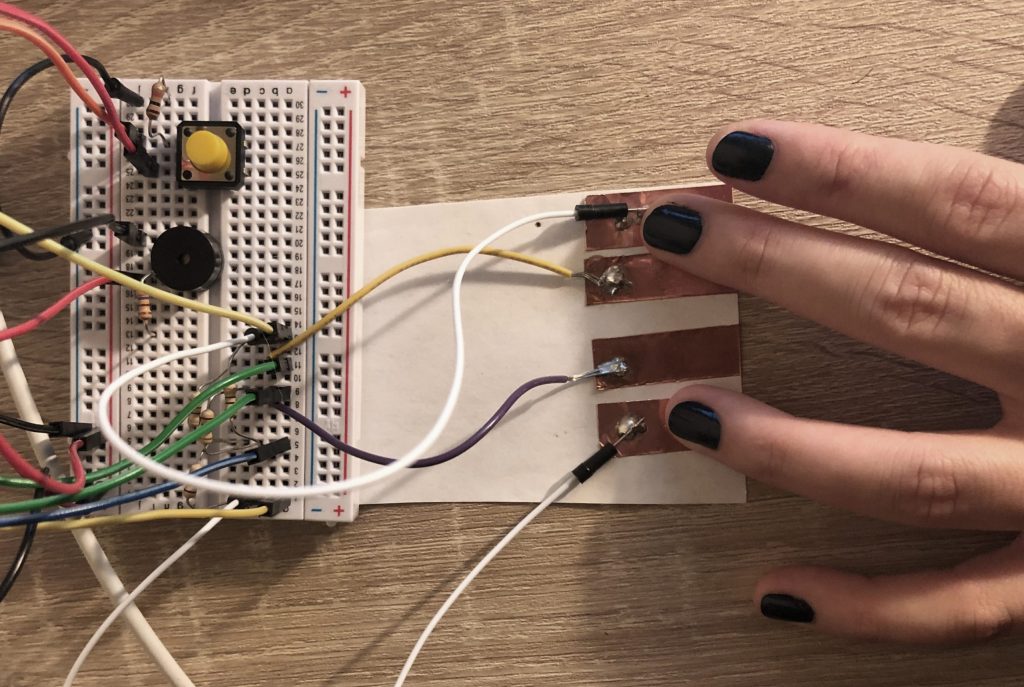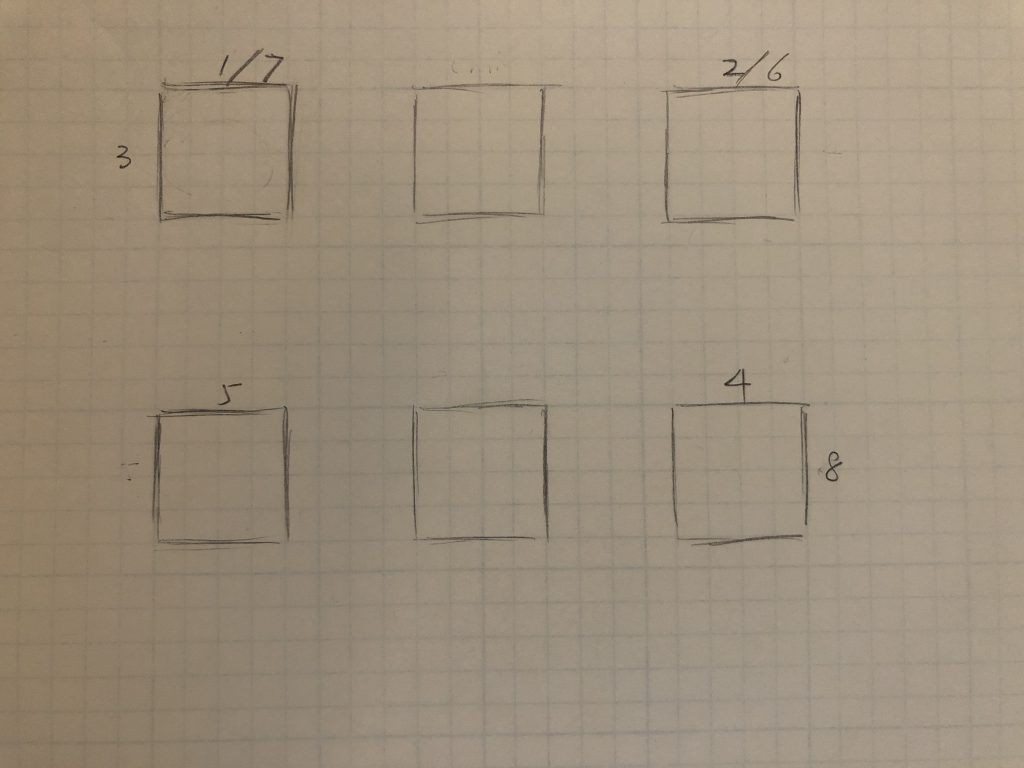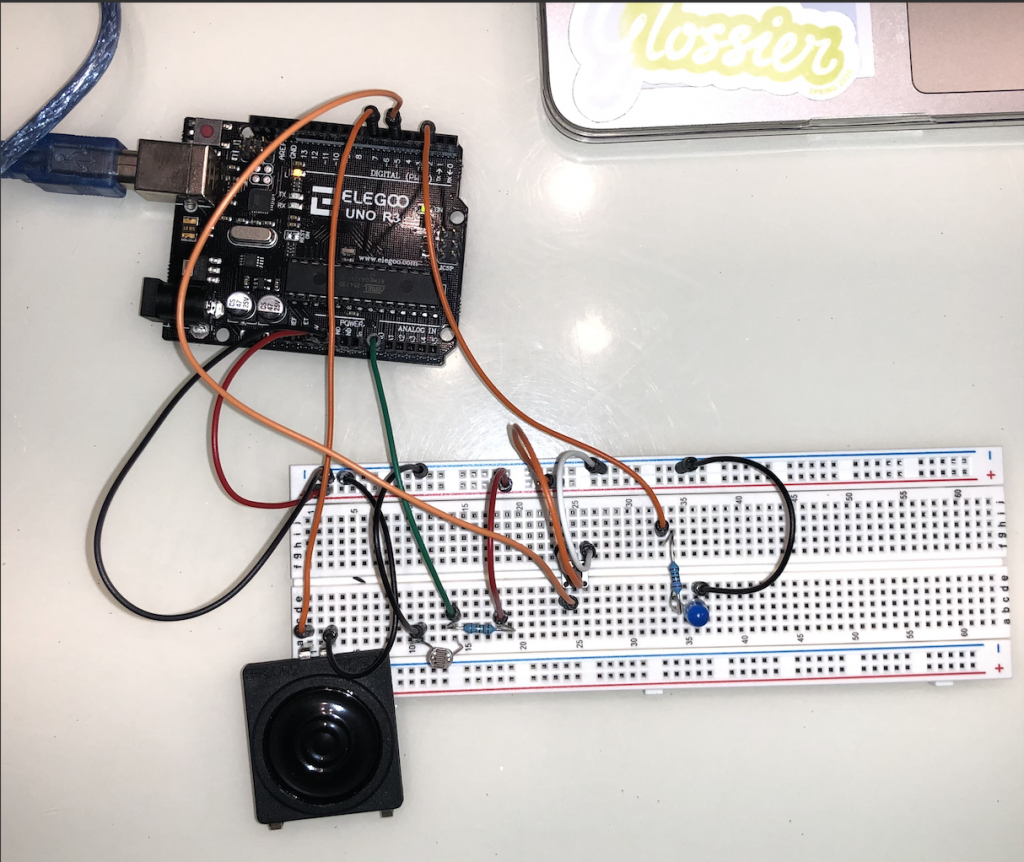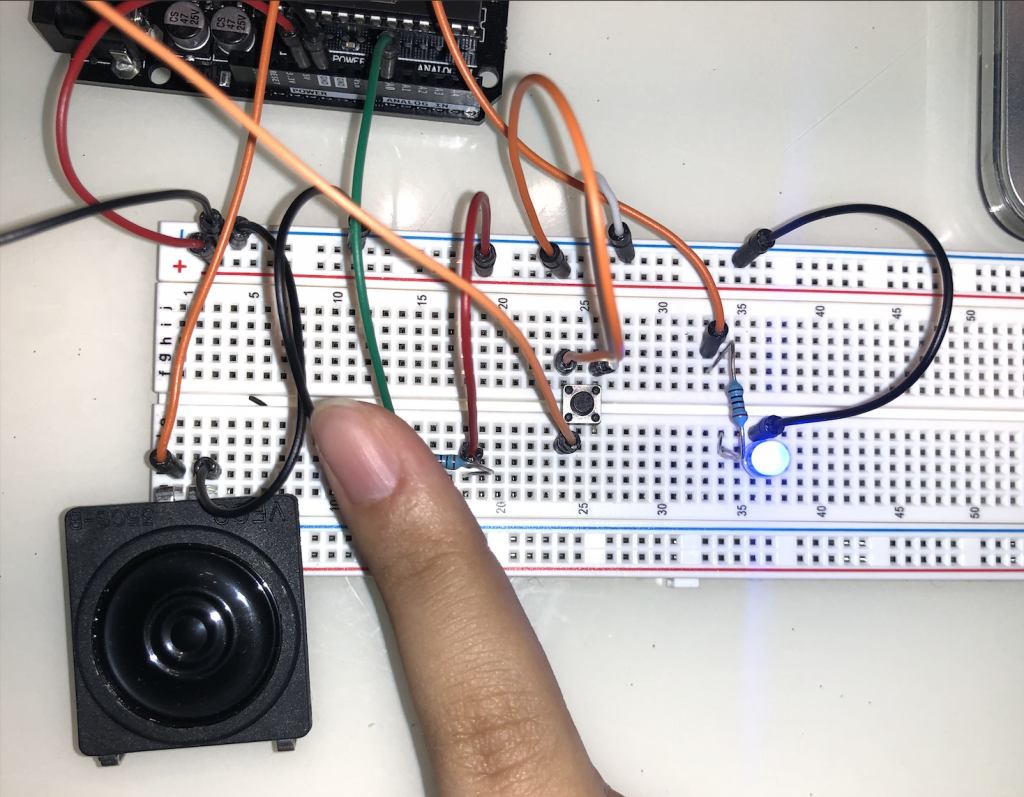Genre conflation
This is a counter to sampling and using electronics to invent new music. Instruments from one style of music are used to perform a style of music from a completely unrelated genre. My favorite examples are “pirate metal” or the band Orkestra Obsolete playing famous pop music.
We’re skipping a lot of contemporary genres — things like EDM, IDM, dub, liquid trap, and future soul. There’s an entire class in this topic, but if you want to go on a genre-binge-fest then Ishkur’s Guide is one place to start: http://music.ishkur.com/
Physical interaction options
How to hide things in plain sight: https://www.youtube.com/watch?v=T61-twuvJA4
Bill Shannon, PGH native, who defies disability with dance performance:
and his tutorial on a dance form he developed:
Ways of making sound
Some examples of different ways people create sound
Foley artists creating the sounds of weather.
The Arduino guide to handling debounce on switches.
A mapping of western scale notes to frequencies.
The Sound Noise Device that uses cameras to create animation and sound.
It’s easy to create sounds without speakers:
- music made with steppers
- A “top ten” list of arduino music projects
- historical tube doorbells and someone what lost their mind
Using things you already have at home
There’s a Japanese TV show for kids, “Pythagora Switch“, that features Rube-Goldberg like devices made with stuff you’d find around the house. These are so popular with adults that people go a little over the top making/recording their own devices still using common items.
Arduino data collection/processing tips
how to debounce a switch: https://www.arduino.cc/en/Tutorial/Debounce
standard deviations, arrays, and monitoring a variable source. flattening data with mean / median.
// -*-c++-*-
/*
The MIT License (MIT)
Copyright (c) 2019 Jet Townsend
Permission is hereby granted, free of charge, to any person obtaining a copy
of this software and associated documentation files (the "Software"), to deal
in the Software without restriction, including without limitation the rights
to use, copy, modify, merge, publish, distribute, sublicense, and/or sell
copies of the Software, and to permit persons to whom the Software is
furnished to do so, subject to the following conditions:
The above copyright notice and this permission notice shall be included in
all copies or substantial portions of the Software.
THE SOFTWARE IS PROVIDED "AS IS", WITHOUT WARRANTY OF ANY KIND, EXPRESS OR
IMPLIED, INCLUDING BUT NOT LIMITED TO THE WARRANTIES OF MERCHANTABILITY,
FITNESS FOR A PARTICULAR PURPOSE AND NONINFRINGEMENT. IN NO EVENT SHALL THE
AUTHORS OR COPYRIGHT HOLDERS BE LIABLE FOR ANY CLAIM, DAMAGES OR OTHER
LIABILITY, WHETHER IN AN ACTION OF CONTRACT, TORT OR OTHERWISE, ARISING FROM,
OUT OF OR IN CONNECTION WITH THE SOFTWARE OR THE USE OR OTHER DEALINGS IN
THE SOFTWARE.
*/
/* basic stats with analogRead()
intputs
A0 pot
output
D2 Speaker
D13 LED
40 NEOPIXEL
*/
#include <Adafruit_NeoPixel.h>
#ifdef __AVR__
#include <avr/power.h>
#endif
#define PIN 44
#define NUMPIXELS 1
Adafruit_NeoPixel pixels = Adafruit_NeoPixel(NUMPIXELS, PIN, NEO_GRBW + NEO_KHZ800);
static int plotter = 1;
static int console = !plotter;
static const int inPot = A0;
unsigned int potValue;
static const int sampleSize = 16;
int readings[sampleSize];
unsigned int sampleIndex = 0;
unsigned long lastSampleTime = 0;
unsigned long sampleInterval = 100; // in ms
// we need to move these out of the loop() as well
unsigned int median = 0;
unsigned int low = 1024;
unsigned int high = 0;
unsigned int mean = 0;
static const int statusLed = 13;
unsigned int lastRedVal = 0;
unsigned int analogMax = 1023;
void setup() {
//analogWriteResolution(10); // Set analog out resolution to max, 10-bits
analogReadResolution(12); // and read at 12 bits
analogMax = 1023 * 4;
Serial.begin(115200);
pinMode(inPot, INPUT);
pinMode(statusLed, OUTPUT);
pixels.begin(); // This initializes the NeoPixel library.
}
void loop() {
// TODO what happens if you try to set a negative color?
unsigned int redVal = 0;
// TODO
// don't read the input on every loop to help stabilize the data
// sampling over time is also a UI change, you have to actively
// block light for
// sampleSize * sampleInterval milliseconds to create a change
unsigned long now = millis();
if (lastSampleTime + sampleInterval < now) {
lastSampleTime = now;
potValue = analogRead(inPot);
// good for debugging:
// Serial.print(now);
// Serial.print(" ");
// Serial.println(potValue);
readings[sampleIndex] = potValue;
sampleIndex < (sampleSize - 1) ? sampleIndex++ : sampleIndex = 0;
digitalWrite(inPot, HIGH);
for (int i = 0; i < sampleSize; i++) {
mean += readings[i];
if (readings[i] < low) {
low = readings[i];
}
if (readings[i] > high) {
high = readings[i];
}
}
mean = mean / sampleSize;
bubbleSort();
median = readings[sampleSize / 2];
}
// set the pixels with different values, mean, median, current read
// long map(long x, long in_min, long in_max, long out_min, long out_max)
// in A10, the value of 600 was the bottom end
// TODO use a flashlight to break this, more light == lower number
// than 600
redVal = map(median, 5, analogMax, 0, 255);
// at home, 950 was the bottom end. Remember that higher value == less light
// how do we dynamically set the bottom end of the map?
// redVal = map(median, 950, analogMax, 0, 255);
// what about changing the max value of redVal so we have a dimmer range?
// redVal = map(median, 600, analogMax, 0, 128);
// TODO keep the pixel from blinking
/*
// simple, but allows for some blinking
if (redVal != lastRedVal) {
pixels.setPixelColor(0, pixels.Color(redVal,0,0));
pixels.show(); // This sends the updated pixel color to the hardware.
lastRedVal = redVal;
}
*/
// use a tolerance to limit to a range
// by making this not a const we can change it in the code
// as needed
int tolerance = 5;
// This looks like it should work, right?
// what happens if lastRedVal is 0?
if (
(redVal > (lastRedVal + tolerance))
|| (redVal < (lastRedVal - tolerance))
) {
pixels.setPixelColor(0, pixels.Color(redVal, 0, 0));
pixels.show(); // This sends the updated pixel color to the hardware.
lastRedVal = redVal;
}
// console
if (console) {
Serial.print("reading ");
Serial.print(potValue);
Serial.print(" low ");
Serial.print(low);
Serial.print(" high ");
Serial.print(high);
Serial.print(" mean ");
Serial.println(mean);
Serial.print(" median ");
Serial.print(median);
Serial.print(",");
Serial.print(" redVal ");
Serial.println(redVal);
delay(100);
digitalWrite(inPot, LOW);
delay(100);
}
else if (plotter) {
// plotter
Serial.print(low);
Serial.print(",");
Serial.print(high);
Serial.print(",");
Serial.print(mean);
Serial.print(",");
Serial.print(median);
Serial.print(",");
Serial.println(redVal);
}
}
// tigoe's sort for an array
void bubbleSort() {
int out, in, swapper;
for (out = 0 ; out < sampleSize; out++) { // outer loop
for (in = out; in < (sampleSize - 1); in++) { // inner loop
if ( readings[in] > readings[in + 1] ) { // out of order?
// swap them:
swapper = readings[in];
readings [in] = readings[in + 1];
readings[in + 1] = swapper;
}
}
}
}






